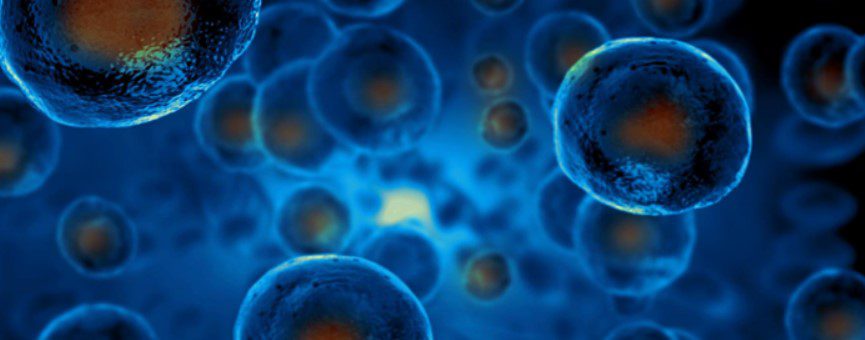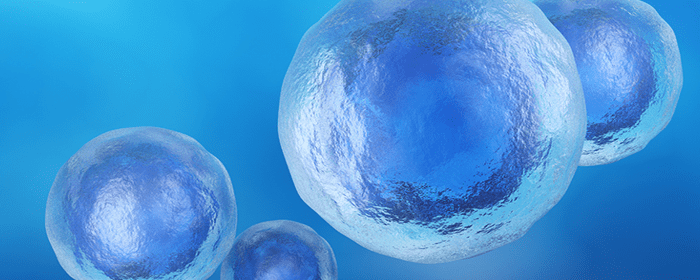
by admin | Jan 24, 2025 | Autoimmune, Mesenchymal Stem Cells, Stem Cell Research, Stem Cell Therapy
The onset of autoimmune diseases is related to unbalanced immune homeostasis and leads to the injury and failure of several organ specific tissues. Currently estimated to affect 8-10% of the population, these autoimmune diseases are associated with serious impairment, high mortality rate, and significant medical costs.
The discovery of stem cells, and specifically mesenchymal stem cells (MSCs), has created new opportunities for accelerating tissue regeneration. MSCs possess the ability to self-renew and differentiate into a wide range of cell types that fill a critical role in immunomodulation and regenerative therapy.
In this review, Jasim et al. share the latest research on the efficiency and feasibility of MSCs in the clinical treatment of several autoimmune disorders including rheumatoid arthritis, type 1 diabetes, multiple sclerosis, systemic lupus erythematosus, inflammatory bowel disease, liver disease, and Sjogren’s syndrome.
To date, most of these autoimmune disorders have been treated with a number of conventional drugs, including non-steroidal anti-inflammatory drugs. However, with many of these conditions, these drugs have been observed to contribute to liver injury, gastrointestinal injury, kidney side effects, BM suppression, and psychological disorders, making the development of new and safe therapeutic approaches an important issue. This has led to significant interest in exploring the potential benefits of MSC therapy in treating autoimmune diseases.
MSCs are easily collected from a variety of sources, including umbilical cord (UC), Wharton’s jelly (WJ), adipose tissue, bone marrow (BM), teeth and menstrual fluid. Research has demonstrated that MSCs regulate their local environment, cellular communications, and the release of several factors. MSCs are also able to migrate and differentiate into damaged tissue and can release growth factors, cytokines, and chemokines, which assists in improving tissue regeneration.
The research evaluated by the authors as part of this review, coupled with MSC’s high proliferation ability, multipotent differentiation capacity, anti-inflammatory and immunomodulatory properties, and regenerative potential, led to the conclusion that there was no remarkable association between mesenchymal stem cell therapy (MSCT) and tumor and infection with the treatment determined to be safe and feasible.
Jasim et al. also concluded that there is still a lack of understanding of the specific mechanisms through which the MSCT ameliorates these various autoimmune diseases that must be addressed as a way to enhance the future clinical use of MSCs.
Source: Jasim SA, Yumashev AV, Abdelbasset WK, et al. Shining the light on clinical application of mesenchymal stem cell therapy in autoimmune diseases. Stem Cell Res Ther. 2022;13(1):101. Published 2022 Mar 7. doi:10.1186/s13287-022-02782-7

by admin | Nov 1, 2024 | Autoimmune, Mesenchymal Stem Cells, Regenerative Medicine, Stem Cell Research, Stem Cell Therapy
The purpose of Zeng et al.’s review and meta-analysis was to evaluate the efficacy and safety of mesenchymal stem cell (MSC) transplantation in the treatment of autoimmune diseases.
MSCs have been found to have powerful immune regulation functions, multi differentiation potential, and the ability to promote hematopoiesis and tissue repair. These stem cells have also been used in the treatment of refractory and severe autoimmune diseases, providing patients with several safe and effective new treatment options.
In order to evaluate the efficacy and safety of MSCs in this capacity, Zeng et al. evaluated 18 randomized controlled trials (RCTs) that involved the following autoimmune diseases: rheumatoid arthritis (RA), systemic lupus erythematosus (SLE), inflammatory bowel disease, ankylosing spondylitis, and multiple sclerosis (MS).
Animal model RCTs evaluating MSC transplantation in the treatment of RA have shown that disease activity was weakened, and clinical symptoms were improved after receiving mesenchymal stem cell transplantation (MSCT).
Treating SLE with MSCs has demonstrated the ability to control disease progression, improve immune system damage, and relieve the condition of lupus in mice models. Other clinical trials demonstrated that MSCs, when transplanted, have been found to be safe while also providing significant clinical therapeutic effects.
In terms of IBS, the authors report that immune dysfunction is believed to play a key role in the occurrence and development of ulcerative colitis. Recent studies also suggest that MSCs might help tissue regeneration by suppressing inappropriate immune responses and providing various cytokines.
Additional research also demonstrated that MSC treatment for 6 months may increase the total effective rate and improve pain and activity associated with ankylosing spondylitis, while more RCTs are needed before a conclusion can be made for the effectiveness of this therapy for MS.
Considering the information obtained as part of this study, Zeng et al. concluded that there were no adverse events associated with MSC transplantation observed in the RCTs that were analyzed. The authors also concluded that MSCs have a certain effect on different autoimmune diseases, but additional RCTs are required to further modify or confirm these findings.
Source: Zeng L, Yu G, Yang K, Xiang W, Li J, Chen H. Efficacy and Safety of Mesenchymal Stem Cell Transplantation in the Treatment of Autoimmune Diseases (Rheumatoid Arthritis, Systemic Lupus Erythematosus, Inflammatory Bowel Disease, Multiple Sclerosis, and Ankylosing Spondylitis): A Systematic Review and Meta-Analysis of Randomized Controlled Trial. Stem Cells Int. 2022;2022:9463314. Published 2022 Mar 24. doi:10.1155/2022/9463314

by Stemedix | Mar 18, 2024 | Autoimmune, Multiple Sclerosis, Regenerative Medicine, Rheumatoid Arthritis, Stem Cell Research, Stem Cell Therapy
Your body is generally very good at telling what’s a foreign invader, like a virus or bacteria, and what’s not — but sometimes, it gets it wrong.
If you have an autoimmune disease, your immune system has begun to associate parts of your body, like your skin or joints, as foreign. When this occurs, the body releases antibodies that attack those healthy cells.
Essentially, your immune system overreacts. That’s what leads to autoimmune diseases. There are many of these kinds of illnesses, but some are much more common than others.
1. Rheumatoid Arthritis: Attacking Your Joints
Rheumatoid arthritis is a disease in which your immune system attacks the joints throughout your body. It attacks the joints on both sides of your body and leads to uncontrolled inflammation that damages cartilage. The joints can begin to deform, and your bones can even erode.
You can experience symptoms like:
- Pain, stiffness, and swelling in joints
- Fatigue
- Fever
- Weakness
With rheumatoid arthritis, you can have periods of remission when you have few to no symptoms, but these are followed by flare-ups.
2. Type One Diabetes: Targeting Insulin-Producing Cells
Your pancreas produces a hormone called insulin, which regulates your blood sugar levels. If you have type one diabetes, your immune system attacks the cells in your pancreas that produce insulin. You can experience symptoms like:
- Extreme thirst
- Fatigue
- Blurred vision
- Frequent urination
- Weight loss
- Vaginal yeast infections
- Slow healing of sores and cuts
Type one diabetes has a strong genetic component, and there may be certain environmental factors, like viruses or toxins, that can also trigger the disease if you have a predisposition.
3. Multiple Sclerosis: Damaging Myelin Sheaths
Multiple sclerosis is an autoimmune disease that damages the coating that surrounds nerve cells. These are called myelin sheaths, and if they’re damaged, the transmission speed of messages between your brain and your spinal cord can be delayed.
You can experience symptoms like:
- Muscle weakness
- Numbness
- Changes to your vision
- Loss of balance
- Mood changes
- Trouble with cognitive function
You can experience remission periods in which you may not have any symptoms.
4. Psoriasis: Leading Skin Cells to Multiple Too Quickly
Usually, skin cells grow and then die off and shed. Psoriasis causes cells to multiply too rapidly, leading to the formation of patches. People who have lighter skin tones can have patches that appear red with white plaque scales, while on darker skin tones, the patches can appear purple or dark brown with gray scales.
It can cause symptoms like:
- Raised areas of thick skin
- Rashes
- Flaky or scaly plaque
There are a few types of psoriasis, with some appearing in your skin folds and some even causing pus-filled bumps.
5. Inflammatory Bowel Disease: Swelling in the Intestinal Wall
Inflammatory bowel disease causes the lining of the intestinal wall to swell. Different parts of your gastrointestinal tract are affected depending on where the inflammation is located.
Symptoms include:
- Abdominal pain
- Anemia
- Malnutrition
- Weight loss
- Rectal bleeding
- Fecal incontinence
One type of inflammatory bowel disease is Crohn’s disease, which can cause inflammation anywhere along the tract, from your mouth to your anus. Ulcerative colitis, however, affects the lining of the large intestine and rectum. Microscopic colitis causes inflammation that can only be seen via a microscope.
6. Lupus: Causing Inflammation Throughout Your Body
Lupus is an autoimmune disease that causes your immune system to attack your entire body. Common symptoms include:
- Fatigue
- Shortness of breath
- Swollen glands
- Hair loss
- Fever
- Rashes
- Blood clots
- Confusion
There are a few types of lupus, including lupus that only affects your skin and medication-induced lupus.
7. Graves’ Disease: Overworking Your Thyroid
This type of immune disease attacks your thyroid gland, leading it to produce too many hormones. This can lead you to experience symptoms like:
- Fast heartbeat
- Unintentional weight loss
- Goiter
- Heat intolerance
Some people who have this condition can experience symptoms that affect the skin or eyes.
8. Addison’s Disease: Impacting the Adrenal Glands
Addison’s disease is a chronic condition in which your adrenal glands don’t produce enough cortisol and aldosterone. Cortisol is a hormone that helps your body respond to stress while also helping you maintain blood pressure, heart function, and more. Aldosterone is a hormone that controls your body’s sodium and potassium levels.
You can experience symptoms like:
- Nausea
- Vomiting
- Abdominal pain
- Patches of dark skin
- Fatigue that gets progressively worse
- Loss of appetite
- Dehydration
Some people also experience low blood sugar levels with the disease.
9. Sjögren’s Disease: Causing Dry Eyes and Mouth
This illness occurs when your immune system attacks the glands that create moisture in your mouth, eyes, and other parts of your body. There is primary Sjögren’s disease, which occurs on its own, and secondary Sjögren’s disease, which happens when another condition triggers the disease.
You can experience symptoms like:
- Dry nose and frequent nosebleeds
- Vaginal dryness
- Dry and itchy eyes
- Dry throat
Some people also experience muscle pain, swollen lymph nodes, and even trouble swallowing.
10. Celiac Disease: Attacking the GI Tract
People who have Celiac disease can’t have gluten, which is a protein found in rye, wheat, and other grain products. If you have this disease, your immune system reacts to any gluten it finds in the small intestine, leading to inflammation. You can experience symptoms like:
- Diarrhea
- Vomiting
- Abdominal bleeding
- Constipation
Because your immune system attacks your gut if you eat gluten, it doesn’t allow you to receive the nutrients you need. People may experience nutritional deficiencies that can cause many other symptoms.
Managing Autoimmune Diseases with Regenerative Medicine
Most autoimmune conditions can be managed. One of the most promising options, especially when combined with other treatments, is regenerative medicine.
Regenerative medicine options like stem cell therapy harness your body’s natural healing mechanisms. They can help reduce inflammation, which plays a huge role in most autoimmune diseases. With less inflammation, blood circulation improves, bringing more nutrients and oxygen to the affected areas.
To determine whether regenerative medicine is a good choice to help manage your autoimmune conditions, consult with your doctor.

by Stemedix | Dec 11, 2023 | Stem Cell Therapy, Alzheimer’s Disease, Autoimmune, Health Awareness, Osteoarthritis, Parkinson's Disease
Treatment of injuries and damage to organs and other tissues as a result of the aging process or conditions has often relied on managing symptoms. By offering painkillers and steroids, healthcare providers can keep you more comfortable, but they are not targeting the cause of the problem. This means you have to keep relying on medications. One option more people are exploring is regenerative medicine, also known as stem cell therapy. This type of regenerative medicine offers the chance to treat the underlying cause of the issue so that you can achieve lasting relief. In this article we will discuss how does stem cell therapy work?
What Is Stem Cell Therapy?
Stem cell therapy utilizes stem cells, which are those that create specialized cells. They can regenerate damaged or dying cells. Although you retain stem cells throughout your life, the aging process can make them less effective. This aging can lead to injuries that don’t heal completely, causing chronic pain and many other problems.
The goal of stem cell therapy is to amplify your body’s natural healing processes. To do this, it relies on stem cells.
In stem cell therapy, these cells are often harvested from the patient’s own body or from donors, and then administered to the affected area or systemically. The goal is to encourage tissue regeneration, repair damaged cells, and promote healing. Stem cells can differentiate into the specific cell types needed to replace or repair damaged tissues, making them a promising treatment for a wide range of conditions.
Stem cell therapy has shown potential in treating conditions such as heart disease, neurological disorders (e.g., Parkinson’s and Alzheimer’s disease), autoimmune conditions, and orthopedic injuries.
Benefits of Stem Cell Therapy
Stem cell therapy is a less invasive option than many other therapies. It requires the removal of stem cells from fat or bone marrow and then the injection of the prepared stem cells at the site of the damage. This not only makes it a viable option for those who can’t undergo surgery, but it also means the recovery process is shorter.
Another benefit of stem cell therapy is that it helps reduce inflammation. When you get injured, your body responds by causing inflammation to prevent the spread of damaging agents while also helping remove pathogens and cell debris. Inflammation also helps prepare the area for the repair process.
In some instances, however, inflammation doesn’t go away, leading to chronic pain. Inflammation also makes it more difficult for the wound to heal because the area is not receiving enough blood.
Stem cell therapy helps reduce this inflammation, allowing oxygen and nutrients to make their way to the damaged area. Less inflammation results in less pain.
Stem cell therapy is also a quick procedure. It can be done as an outpatient option, and it doesn’t require general anesthesia. Because most people benefit from adult stem cells, the procedure also avoids the need to worry about rejections or allergic reactions.
What to Expect from the Stem Cell Therapy Procedure
The first thing you will need to do is reach out to your healthcare provider to see if you are a good candidate for stem cell therapy. Your provider will go through your medical history to see which types of stem cells you can benefit the most from. The kind of condition or injury you have will impact this choice.
If you’re using your own stem cells, your healthcare provider will collect a sample from your bone marrow or fat. They then process them in a laboratory to isolate and concentrate them. In some cases, the process can involve centrifugation, filtering, and other options to help collect the highest number of stem cells.
The next step is receiving the stem cells, which can take place intravenously, with an injection, as well as other administration techniques.
After you receive the stem cells, your healthcare provider will monitor you to ensure there are no complications. They will also schedule follow-up phone calls to monitor how you are doing post-treatment.
Most people can get right back to their daily activities with some minimal post-treatment guidelines without having to worry about long recovery times.
Available Stem Cell Treatments
How does stem cell therapy work & what are the available treatments? Stem cells can help treat a variety of conditions. It’s helpful in treating cartilage regeneration and osteoarthritis because the stem cells can differentiate into chondrocytes, which are cells that maintain cartilage.
It’s also an option that can help with scar reduction and wound healing. For this procedure, stem cells derived from fat cells are a good option. They can help with tissue regeneration, potentially leading to healing chronic wounds and even the prevention of scarring.
Stem cell therapy is also a good choice for neurodegenerative issues. It can help replace neurons and provide neuroprotective benefits, potentially leading to slowing down the disease’s progression.
Stem cell therapy may also target ligament and tendon injuries, which are common in people who are very active. This type of therapy can help speed up the recovery process and might even be able to prevent the development of chronic pain issues that can affect mobility.
Another way stem cell therapy is able to help is by treating autoimmune diseases. Most autoimmune diseases are impacted by inflammation, so an option like stem cell therapy, which helps reduce swelling, can be helpful.
Choosing Stem Cell Therapy for Lasting Results
Stem cell therapy offers hope for the treatment of many types of conditions. By targeting the cause of pain and chronic injuries, like inflammation, you can avoid relying solely on pain medications, which only mask symptoms. Stem cell therapy makes it possible to have available options to help manage orthopedic injuries, neurodegenerative conditions, and much more.
If you want to learn more about how does stem cell therapy work and not sure whether stem cell therapy is a good option for your needs, speak with a regenerative medicine specialist. They can let you know if you are a good candidate.

by Stemedix | Nov 27, 2023 | Stem Cell Therapy, Autoimmune, Regenerative Medicine, Stem Cell Research
After suffering an injury or experiencing any kind of damage to your body, it’s common to worry about how long the recovery process will take and wonder how soon you’ll be back to your normal self. The answer greatly depends on your physical health, the type of injury you face, and the treatments you’re receiving.
By understanding the drawbacks some traditional treatment options offer, especially when speaking about orthopedic injuries, and knowing more about options like stem cell therapy, you’ll be better able to make informed decisions about your treatment. Learn more about how regenerative medicine options, such as stem cell therapy, can impact the recovery process.
Why Traditional Treatments Aren’t Always Right
In orthopedics, healing takes significant time. It’s important to note, however, that one of the most common treatment options — surgery — only extends the time necessary to fully heal.
The typical healing period for someone who has undergone orthopedic surgery, even minimally invasive options, is several weeks. And that time refers only to the healing needed so that you can be up and walking around again — it does not mean being back to your full strength or regaining your flexibility.
This is why it’s common to see professional athletes take several months to recover after an injury that required surgery. As you recover, you also have to take pain medications and other drugs.
If you don’t choose the surgery route, another traditional option is steroids. These relieve pain and reduce inflammation, but they cause more damage to the injured area. They can cause a decrease in blood supply to the bones in the joints, leading to them weakening. Also, they can potentially accelerate cartilage damage.
Turning to pain medications alone does help reduce pain, but because they don’t do anything to fix the problem causing the pain in the first place, all painkillers do is prolong the issue. Long-term use of pain medications has its own health risks, which you will want to weigh against the benefits the medications provide.
Taking steroids and turning to painkillers will generally only delay the need for surgery. They don’t stop the progression of the problem that causes pain, allowing it to worsen while masking the symptoms. And while surgery is often successful at treating the injury, its cost and invasiveness mean it is not a viable option for everyone.
Understanding Stem Cell Therapy
Stem cells are your body’s building blocks. They are the cells that divide to form daughter cells that become other stem or specialized cells.
Stem cells can generate healthy cells to replace those damaged or affected by disease. They can be guided to become specialized cells, helping repair and regenerate tissues throughout the body.
There are three types of stem cells — embryonic, perinatal, or adult stem cells. Embryonic stem cells come from donated embryos that are three to five days old and contain an inner cell mass. These are pluripotent cells, meaning they can become any type of cell in the body or more stem cells. Due to the controversy of using these stem cells, they are primarily used in research only.
Perinatal stem cells come from amniotic fluid or umbilical cord blood. These stem cells can transform into specialized cells.
Adult stem cells are present in most tissues in the adult body, including fat tissues, bone marrow, or umbilical cord tissue. Although their abilities are slightly more limited than those found in embryonic stem cells, they are still potent and can create all kinds of human cells. Adult stem cells break down into many different types, including:
- Mesenchymal stem cells
- Hematopoietic stem cells
- Skin stem cells
- Neural stem cells
- Epithelial stem cells
Stem cell therapy refers to the use of stem cells to promote the repair response of injured, diseased, or dysfunctional tissues. Stem cell therapy requires the preparation of the cells, which are usually obtained from your body and then injected into the treatment area.
How Stem Cell Therapy Helps
Stem cell therapy stimulates your body’s natural healing response. When a part of your body has inflammation, which is a natural response to an injury, it receives less blood.
The stem cell therapy reduces inflammation, which helps decrease pain while also improving blood circulation. More blood means the injured area receives the nutrients and oxygen it needs to heal itself.
Stem cell therapy allows for the management and healing of the problem. It doesn’t just mask the symptoms or delay the need for surgery; instead, it helps the formation of healthier tissues in the areas where they are needed.
Another benefit of stem cell therapy is that it doesn’t require any invasive procedures. All that is necessary is to extract stem cells from your body and enhance them before injecting them at the treatment site.
Unlike surgery, you don’t have to worry about a long recovery time or having to rely on help from others to manage everyday life as you heal. If you are someone who can’t go under general anesthesia, this is an option to consider. It is an outpatient procedure, allowing you to go home right after.
With stem cell therapy, you also don’t have to stress about participating in physical therapy for months, as you would have to do after surgery. It is an option that allows you to get back to your life as quickly as possible.
Relying on Regenerative Medicine
As one of the branches of medicine that holds promising potential, people are exploring regenerative medicine options like stem cell therapy. From autoimmune diseases to sports injuries and more, stem cell therapy, platelet-rich plasma, and other regenerative medicine options can help.
Not everyone can have surgery, and not everyone wants to depend on steroids and pain medications to feel relief.
By turning to an option that focuses on getting to the underlying problem causing the pain, you have an opportunity to see faster results without worrying about a long recovery process or dealing with general anesthesia. Give your body the chance to heal itself by considering stem cell therapy.

by admin | Nov 23, 2023 | Autoimmune, Mesenchymal Stem Cells, Regenerative Medicine, Stem Cell Research, Stem Cell Therapy
Recent estimates indicate that one in every 10 people is affected by an autoimmune disease.
Autoimmune diseases occur when the normal function of the immune system mistakenly attacks normal and healthy cells within the body; examples of autoimmune diseases include rheumatoid arthritis, type 1 diabetes, and lupus. Currently, there are over 80 known types of autoimmune disease.
Because of their proliferation and differentiation ability, mesenchymal stem cells (MSCs) have increasingly drawn interest from the research community as a potential option for the treatment of autoimmune diseases.
In this study, Zeng et al. evaluate the efficacy and safety of MSC transplantation in the treatment of autoimmune diseases. Specifically, this review included a total of 18 RCTs involving rheumatoid arthritis (RA), systemic lupus erythematosus (SLE), inflammatory bowel disease (IBS), ankylosing spondylitis (AS), and multiple sclerosis (MS).
Reviewing the therapeutic effects of MSCs on each of the diseases, the authors found that with the exception of MS, transplantation of MSCs may improve clinical symptoms and clinical efficacy of these autoimmune diseases. However, the authors also point out that MSCs appear to produce certain specific effects on different autoimmune diseases.
Although no obvious adverse events resulting from MSC transplantation were reported or observed during these studies, and while MSCs appear to have certain effects on different autoimmune diseases, the authors conclude that this review provides relevant evidence for the design of future clinical trials specifically assessing MSC cell source, dosage, route of drug administration, and intervention in the most ideal disease state when treating this group of diseases.
Source: “Efficacy and Safety of Mesenchymal Stem Cell Transplantation in ….” https://www.hindawi.com/journals/sci/2022/9463314/.







 St. Petersburg, Florida
St. Petersburg, Florida
